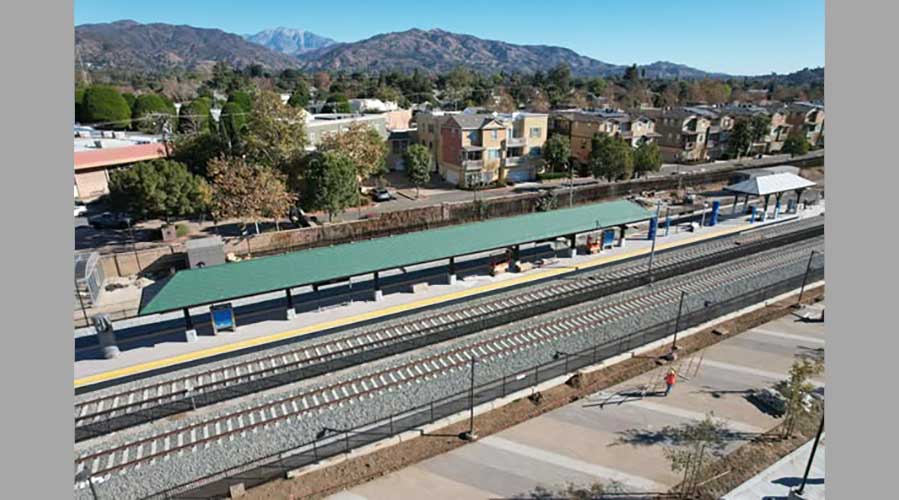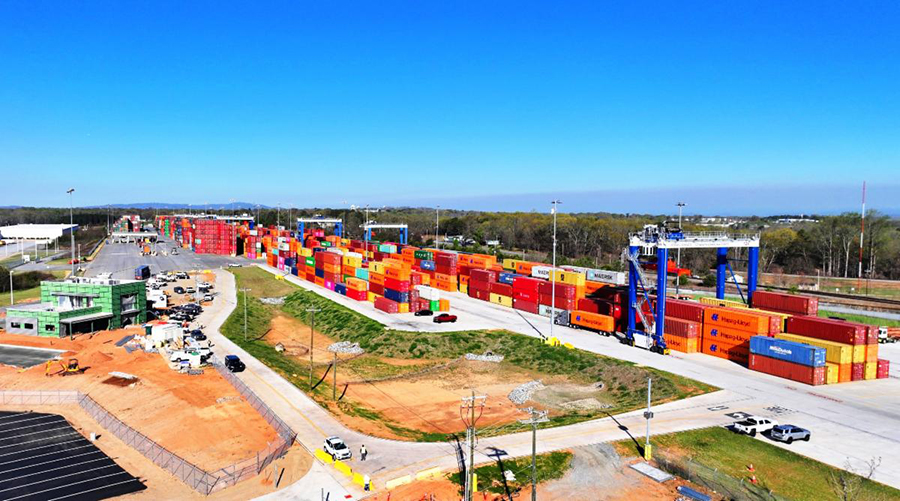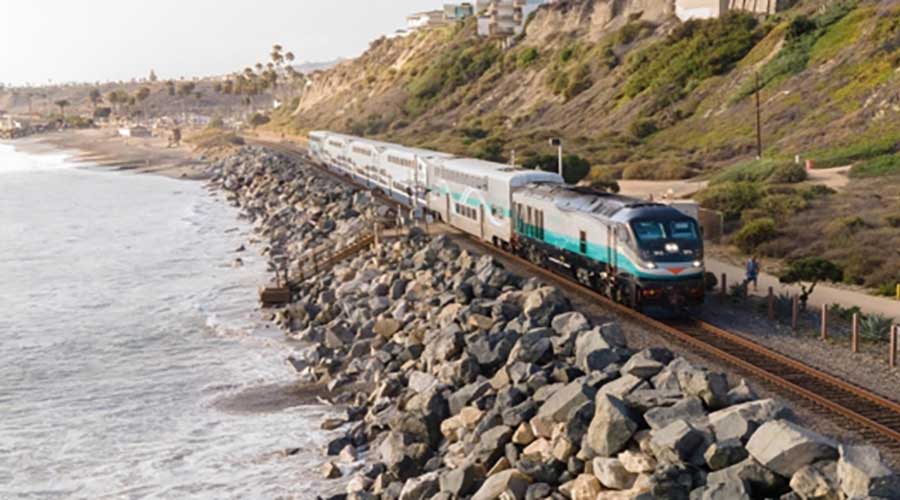Newsletter Sign Up
Stay updated on news, articles and information for the rail industry
Stay updated on news, articles and information for the rail industry
Rail News Home
Intermodal
Rail News: Intermodal
Mark Twain popularized the phrase: "There are three kinds of lies: lies, damned lies and statistics." The Alameda Corridor train count statistics reported by ProgressiveRailroading.com Dec. 13 can't be characterized as an untruth — November's total of 1,356 trains were the lowest monthly total so far this year and fewest since February 2005 — but they don't tell the whole story either.
Train counts are down partially because of a slight cargo volume decline at the ports of Los Angeles and Long Beach, and primarily because of BNSF Railway Co.'s and Union Pacific Railroad's operating efficiencies, according to the Alameda Corridor Transportation Authority (ACTA).
During the past few years, BNSF and UP — the corridor's main users — have lengthened intermodal trains and improved productivity, resulting in fewer trains needed to traverse the corridor to move an equivalent or higher amount of freight, ACTA said. In 2005, an average train using the corridor was 6,500 feet long and carried about 230 containers; today, an average train is 8,000 to 9,000 feet long and carries 280 containers. In addition, BNSF operates some trains that that exceed 10,000 feet in length.
Between 2003 — the corridor's first full year of service — and 2006, train trips increased 38 percent while the average daily number of containers moved along the route skyrocketed about 80 percent from 4,000 to 7,200.
ACTA's train count figures include train trips involving container moves, as well as a combination of locomotives going back and forth for fueling or repositioning, empty trains returning to the ports for container loading and manifest trains.
12/17/2007
Rail News: Intermodal
Alameda Corridor's lower train counts have more to do with longer trains and less to do with traffic volumes, ACTA says
advertisement
Mark Twain popularized the phrase: "There are three kinds of lies: lies, damned lies and statistics." The Alameda Corridor train count statistics reported by ProgressiveRailroading.com Dec. 13 can't be characterized as an untruth — November's total of 1,356 trains were the lowest monthly total so far this year and fewest since February 2005 — but they don't tell the whole story either.
Train counts are down partially because of a slight cargo volume decline at the ports of Los Angeles and Long Beach, and primarily because of BNSF Railway Co.'s and Union Pacific Railroad's operating efficiencies, according to the Alameda Corridor Transportation Authority (ACTA).
During the past few years, BNSF and UP — the corridor's main users — have lengthened intermodal trains and improved productivity, resulting in fewer trains needed to traverse the corridor to move an equivalent or higher amount of freight, ACTA said. In 2005, an average train using the corridor was 6,500 feet long and carried about 230 containers; today, an average train is 8,000 to 9,000 feet long and carries 280 containers. In addition, BNSF operates some trains that that exceed 10,000 feet in length.
Between 2003 — the corridor's first full year of service — and 2006, train trips increased 38 percent while the average daily number of containers moved along the route skyrocketed about 80 percent from 4,000 to 7,200.
ACTA's train count figures include train trips involving container moves, as well as a combination of locomotives going back and forth for fueling or repositioning, empty trains returning to the ports for container loading and manifest trains.


 LRW Honors Amtrak’s Acheson As Railway Woman Of The Year
LRW Honors Amtrak’s Acheson As Railway Woman Of The Year
 From Editor-In-Chief Foran: Of Gender Equity And Inclusion
From Editor-In-Chief Foran: Of Gender Equity And Inclusion
 Spotlight On Some Of Today’s Rail Safety Products
Spotlight On Some Of Today’s Rail Safety Products
 Women of Influence in Rail eBook
Women of Influence in Rail eBook
 railPrime
railPrime







